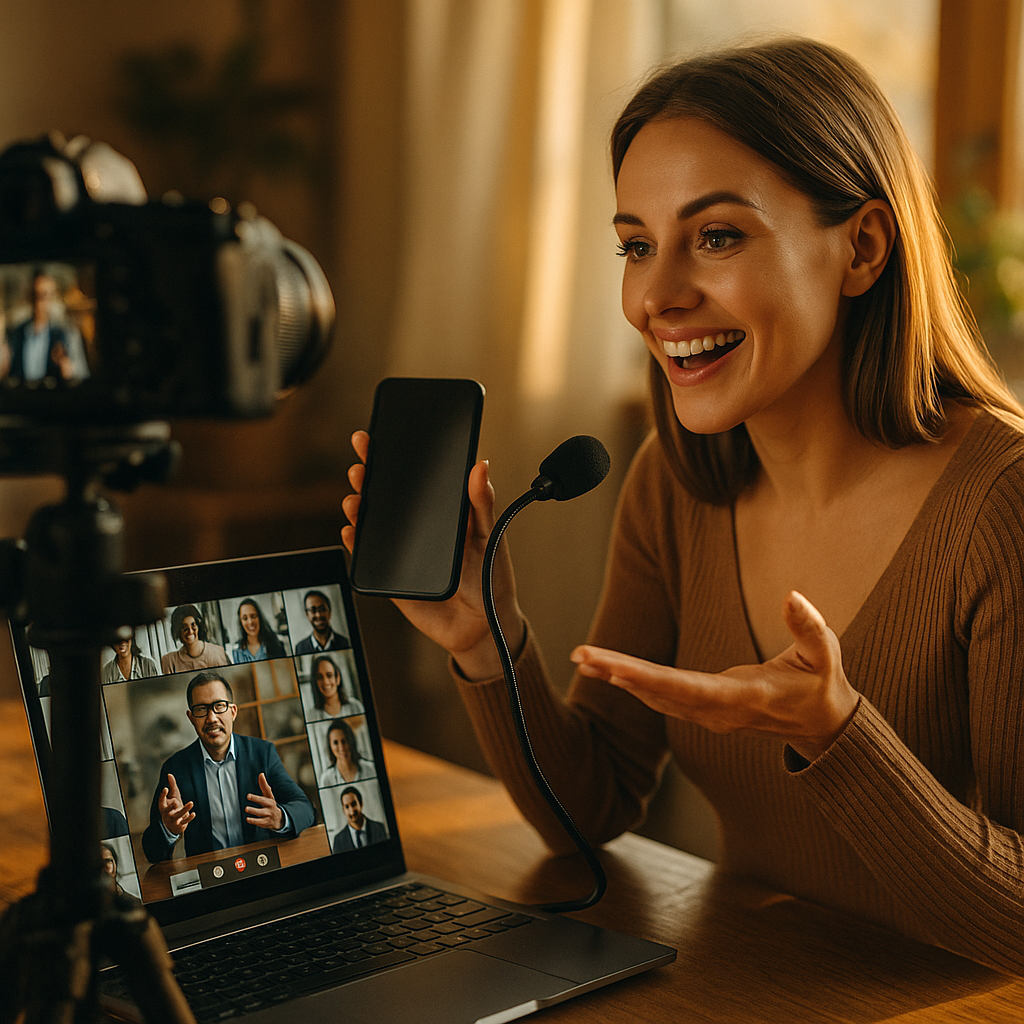Using influencers to promote a B2B virtual event can supercharge registrations and engagement in 2025. However, success requires a strategic approach that leverages relationships, aligns messaging, and measures performance rigorously. Below, discover a practical playbook full of expert-backed steps B2B marketers can use to amplify your next virtual event’s reach.
Why Influence Marketing Works for B2B Virtual Event Promotion
B2B virtual event influencers have become essential connectors in crowded digital spaces. Unlike celebrities, these experts—often industry analysts, respected consultants, or tech leaders—hold the trust of niche, professional audiences. According to the 2024 Influencer Marketing Benchmark Report, 63% of B2B brands using influencers for events report higher engagement rates.
Influencers lend credibility, provide access to hard-to-reach decision-makers, and can position your event as a must-attend. Their deep expertise ensures endorsements don’t feel forced, so they’re more persuasive than typical ads or email blasts.
Crafting the Ideal Influencer Partnership Strategy
Building a B2B influencer program starts with precision:
- Define your event goals: Clarify registration targets, brand lift, or sales pipeline creation.
- Specify your audience: Pinpoint job titles, verticals, and challenges your event addresses.
- Choose influencers strategically: Prioritize professionals with relevant LinkedIn and X (Twitter) networks, proven sector impact, and content that aligns with your messaging.
- Build authentic relationships: Start with genuine engagement on their content and advance toward event collaboration.
Vet influencers based on their expertise and genuine community engagement, not just follower count. Involve marketing, sales, and product teams to ensure full alignment on targets and messaging.
Designing a Compelling Campaign With Event Influencers
Your influencer campaign should integrate seamlessly with the full B2B virtual event marketing plan.
- Co-create value: Invite influencers to moderate panels, conduct live Q&A, or design micro-sessions. Content collaboration feels more authentic than mere event shout-outs.
- Empower their authentic voices: Provide talking points but allow influencers to personalize messaging. Encouraged authenticity generates higher trust and engagement.
- Leverage multiple formats: Use LinkedIn posts, industry newsletters, podcasts, and short-form video teasers. Influencers excel at adapting formats to their audience.
- Sync up on timelines: Develop a campaign calendar that paces influencer outreach, content drops, and reminders to maximize registration momentum up to the event date.
Add gamified incentives, such as VIP access or leaderboard recognition, to motivate influencers and their audiences to become brand advocates beyond the event.
Best Practices for Engaging B2B Virtual Event Influencers in 2025
To produce measurable results, brands must thoughtfully manage influencer relationships from recruitment to reporting. Follow these practices:
- Transparent compensation and expectations: Be clear about honoraria, affiliate rewards, or exposure benefits. Transparency fosters trust.
- Onboard like a partner, not a vendor: Share detailed event overviews, audience personas, and your unique value proposition.
- Comply with disclosure guidelines: Ensure influencers clearly indicate paid or sponsored relationships as required by 2025 digital advertising standards.
- Enable real-time support: Provide timely assets, quick responses to questions, and easy ways to offer feedback before, during, and after the event.
- Nurture ongoing relationships: Consider season-long ambassadorships or post-event collaborations to maximize long-term value.
These steps help ensure influencer partnerships are smooth, share professional integrity, and reflect positively on your brand.
Measuring B2B Event Influencer ROI and Next Steps
Evaluating your B2B virtual event campaign’s success is crucial. Use a data-driven approach:
- Track unique registration links: Assign custom UTM parameters or affiliate codes to each influencer to pinpoint conversions.
- Monitor engagement metrics: Analyze likes, shares, comments, and click-through rates from influencer-generated content versus brand posts.
- Qualify lead quality: Post-event, determine if influencer-attained registrants match your ideal buyer profiles and progress through your sales funnel.
- Solicit attendee feedback: Gather direct responses about influencer impact via event surveys.
Compile insights and share outcomes with your influencers, too—transparency builds loyalty and can spark ambitious new partnerships for future events.
FAQs: Using Influencers for B2B Virtual Event Promotion
-
How do I identify the right influencers for my B2B event?
Research industry analysts, subject matter experts, and community-builders active on LinkedIn, X (Twitter), and relevant forums. Assess their relevance, engagement, and prior collaborations in your market.
-
Should B2B influencers be paid or is exposure enough?
In 2025, most B2B influencers expect compensation. Structure arrangements based on impact, event scope, and influencer prestige; combine payments with co-branding and incentives.
-
What platforms work best for B2B influencer outreach?
LinkedIn remains the leading B2B channel. Explore podcasts, YouTube, Substack, and vertical industry communities to maximize reach to your target personas.
-
Is influencer marketing effective for smaller virtual events?
Yes. Micro-influencers and niche thought leaders often deliver higher engagement and conversion rates for tightly focused B2B communities.
-
How do you measure the success of influencer campaigns for virtual events?
Gauge campaign success via tracked registrations, content engagement stats, lead quality, and direct attendee feedback regarding influencer contributions.
When executed thoughtfully, using influencers to promote a B2B virtual event delivers exposure, credibility, and qualified leads. By prioritizing strong partnerships, creative collaboration, and meticulous measurement, your brand can fully harness influencer impact—and consistently drive results in 2025’s busy virtual event landscape.
